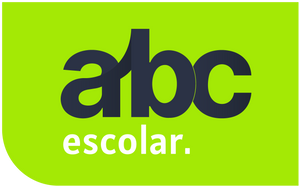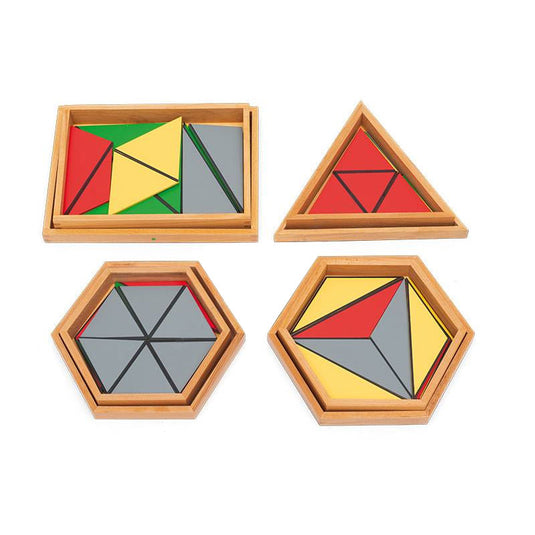Four boxes in which there are colored triangles for constructing regular and irregular flat figures and patterns.
Triangles should be classified based on their color or black lines along their sides.
The triangle-shaped box contains elements that, when assembled according to the rules, form triangles: 1 gray as a whole, green with 2 triangles, yellow with 3 triangles and red with 4 triangles.
The box in the shape of a large hexagon contains the parts that make up regular polygons: yellow hexagon made up of 1 integer, yellow hexagon made up of 4 triangles, gray parallelogram of 2 triangles, red rhombus of 2 triangles.
The box in the shape of a smaller hexagon contains elements with which it is possible to arrange regular polygons: 1 yellow triangle of 1 integer, 3 red diamonds made of 6 triangles, 1 green isosceles trapezoid made of 3 triangles and 1 gray hexagon made of 6 triangles.
Two sets of triangles are placed in a rectangular box.
A set consists of yellow, gray, green and red triangles forming regular quadrilaterals: 1 green square, 1 gray rectangle, 1 red trapezoid, 1 yellow rhombus, 1 green and 2 yellow parallelograms. Each quadrilateral is formed by two triangles.
The second set consists of blue triangles without black outlines. From these triangles, regular quadrilaterals are formed, each consisting of 2 triangles: 1 square, 1 rectangle, 1 rhombus and 1 isosceles trapezoid.
By acquiring the basics of geometry, children develop and improve their ability to construct and name different geometric figures. This activity allows students to discover that triangles can create regular or irregular shapes and patterns.
Features
- Dimensions of the triangular box: 26.5x3.5x23 cm;
- Large hexagonal box dimensions: 26.5x3.5x23.5 cm;
- Dimensions of the small hexagonal box: 25x3.5x22 cm;
- Rectangular box dimensions: 29.5x4x22.5 cm;
- Material; Wood;
- Age: 4+


